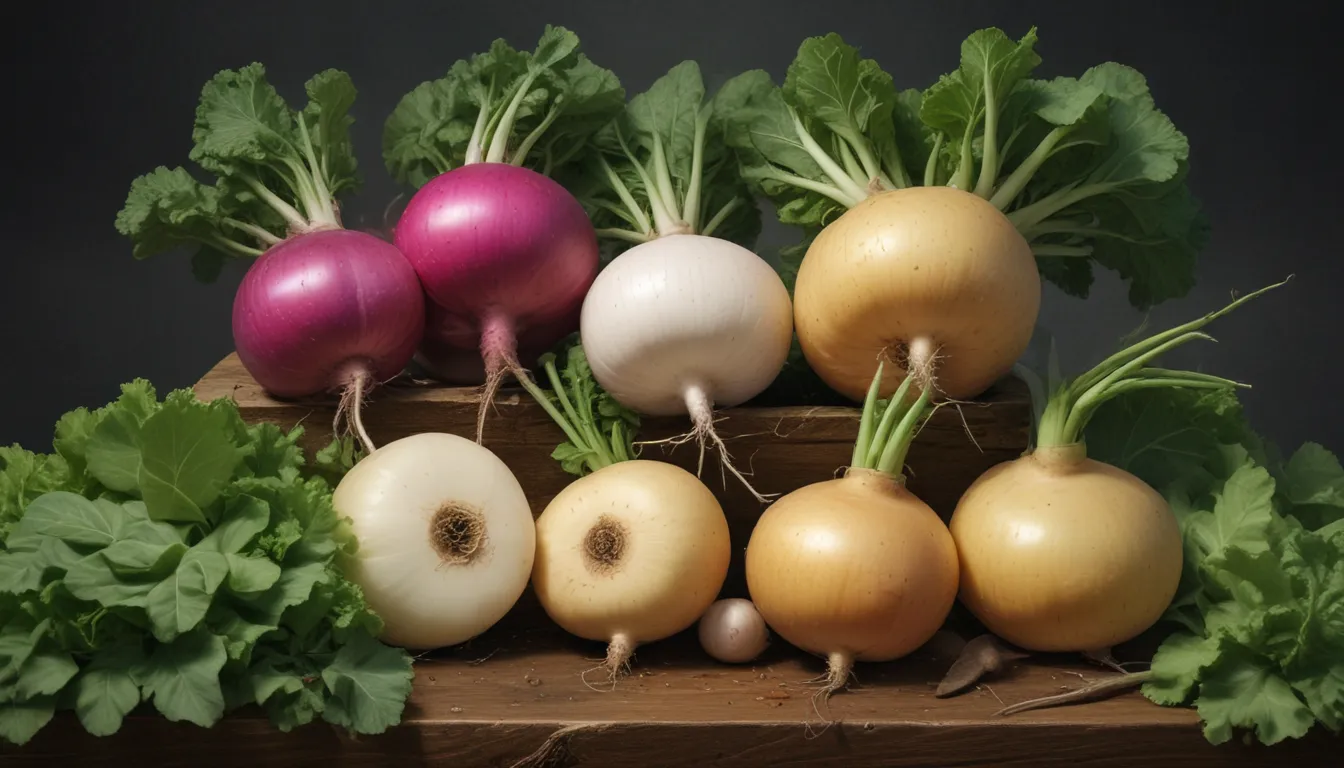How to Identify and Treat Diseases of Turnips and Rutabagas: A Comprehensive Guide for Gardeners

If you love growing turnips and rutabagas, you are likely aware that these root crops are not immune to diseases. Bacterial, fungal, oomycete, and viral infections can wreak havoc on your plants, affecting both the leaves and roots. In this guide, we’ll dive deep into each type of disease, how to identify them, and effective treatment methods to help you protect your crop and maximize your harvest.
Root Crops 101: Turnips and Rutabagas
Before we delve into the world of diseases, let’s take a moment to appreciate these versatile root crops. Turnips and rutabagas are not only flavorful additions to your meals but also relatively easy to grow in your garden. With the right care and attention, you can enjoy a bountiful harvest of these nutritious vegetables.
Blight Brigade: Bacterial Diseases
Bacterial infections can spell trouble for your turnips and rutabagas, but with the right knowledge and precautions, you can minimize the risks. Here are some common bacterial diseases to watch out for:
- Black Rot: One of the most damaging bacterial pathogens that can infect turnips and rutabagas, black rot can be devastating if left unchecked. Starting with clean, disease-resistant seeds and avoiding overhead irrigation can help prevent the spread of this disease.
- Bacterial Leaf Spot: Caused by various bacteria, including X. campestris pv. campestris and Pseudomonas syringae pv. maculicola, these infections can cause water-soaked lesions on leaves. Prevention is key to controlling bacterial leaf spot.
If your plants do develop a bacterial infection, consider spraying with copper hydroxide to prevent further spread.
Oomycete Omens: Identifying and Treating Diseases
Oomycetes, once considered fungi, can also pose a threat to your turnips and rutabagas. Here are a couple of common oomycete diseases to be aware of:
- White Rust: Characterized by yellow spots on the upper leaf surfaces and white pustules on the underside, white rust can spread and affect the entire plant. While no fungicides are registered to control this disease, early detection and prevention are key.
- Downy Mildew: Caused by Peronspora parasitica, downy mildew can be particularly problematic in cool conditions. Look out for yellow patches on the upper leaves and white mildew on the undersides. Treat preemptively with copper hydroxide or fungicides to avoid severe infections.
Maintaining dry conditions and controlling cruciferous weeds can help prevent the spread of oomycete diseases.
Fungal Foes: Identifying and Controlling Infections
Fungi can also cause diseases in turnips and rutabagas, affecting both the leaves and roots. Here are some common fungal diseases to watch out for:
- Alternaria Leaf Spot: Caused by Alternaria species, this disease can lead to yellow to black spots on leaves with concentric rings. Planting disease-free seeds and controlling weeds can help prevent this cosmetic disease.
- White Spot: Caused by Cercosporella brassicae, white spot lesions range from gray to brown with darkened margins. Protect your plants by minimizing wetness and spraying protective fungicides when conditions are favorable.
For more information on identifying and treating fungal diseases, refer to specific resources on each disease.
Viral Villains: The Threat of Viral Diseases
Viral diseases, such as turnip mosaic virus, can severely affect the yields of turnips and rutabagas. With symptoms ranging from yellow and green mosaics to stunted growth, these infections can be detrimental to your crop.
Preventive measures, such as controlling aphids and using reflective mulches, can help mitigate the risks of viral diseases in your garden.
Conclusion: Growing Healthy Turnips and Rutabagas
While turnips and rutabagas may be susceptible to a variety of diseases, arming yourself with knowledge and preventive measures can help you protect your crops and enjoy a successful harvest. By planting disease-resistant seeds, practicing crop rotation, and maintaining dry conditions, you can minimize the risks of bacterial, fungal, oomycete, and viral infections in your garden.
Remember, being proactive and observant is key to identifying and treating diseases early on. With proper care and attention, you can grow healthy turnips and rutabagas that thrive in your garden.
Have you encountered any diseases while growing turnips and rutabagas in your garden? Share your experiences and questions in the comments below!
And if you’re looking for more gardening tips and resources, check out these additional guides:
- How to Eradicate Turnip and Rutabaga Pests
- How to Plant and Grow Turnips
- How to Grow Rutabagas: A Cool-Weather Crop Perfect for Fall
Happy gardening!





